The best camping knots: for rigging shelters, speedy repairs, hammocks hanging and more
We guide you on how to tie six of the best camping knots to provide plenty of options on your camping trips – because having a bit of knotting knowledge can take you far
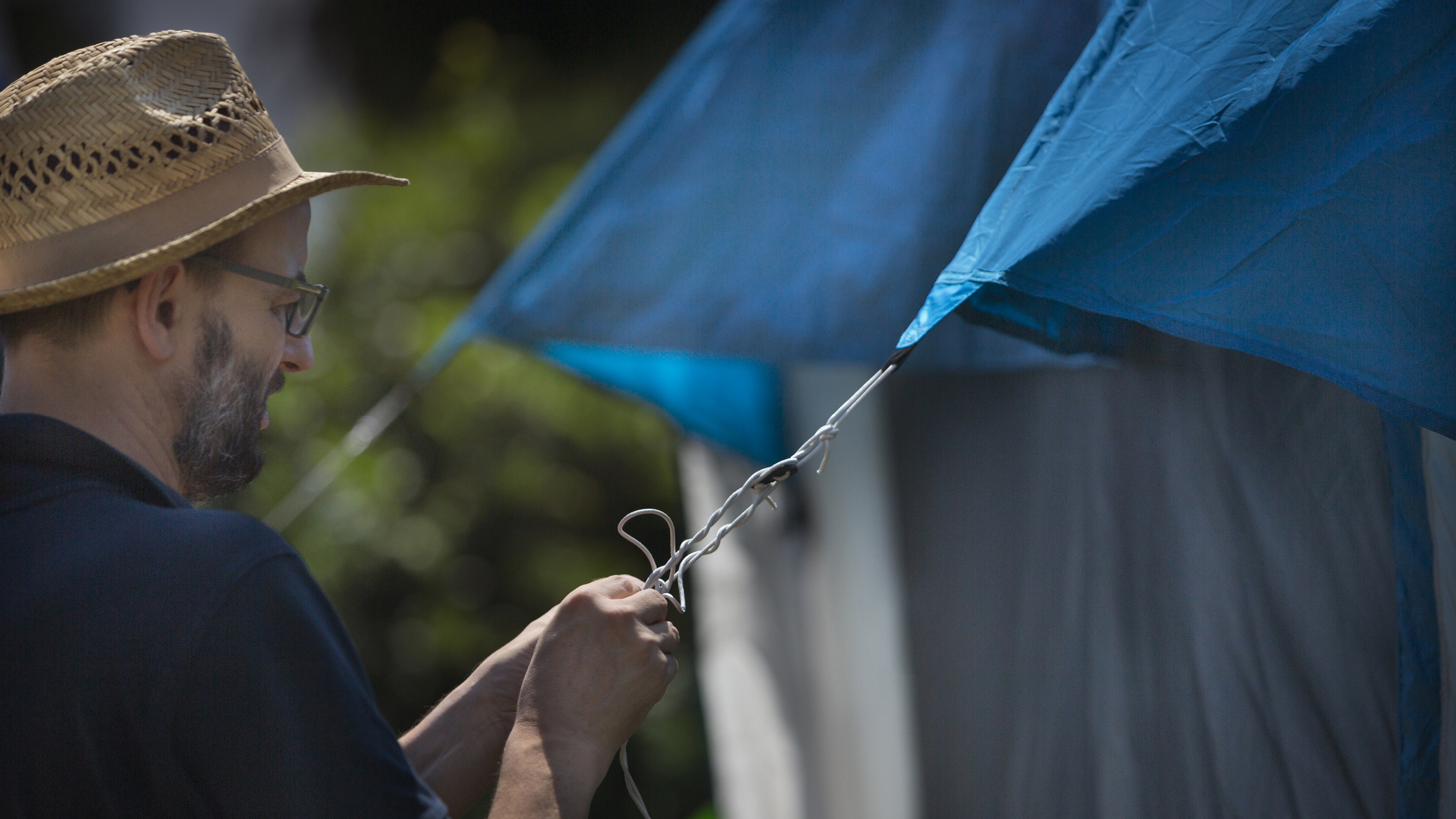
Knowledge of the best camping knots is not only useful when it comes to setting up hammocks or seeing to tent repairs, it'll enhance your proficiency in terms of your general outdoors life. Spending time mastering just a few of the best camping knots will pay dividends in the long run. The only problem is that, once word of your masterful craft gets around the campground, everyone will be wanting a piece of you. That's knot fun (ahem).
But where to start? When faced with an issue with your best camping tent and a coiled rope, what would you tie? We all know how to tie a bow knot (you know, the one you use to do up your shoelaces). Most of us instinctively know how to do a classic overhand knot too, even if we don’t know that’s what it’s called. And those who were in the Scouts, Guides or military cadets as kids might even vaguely remember a few others, like the reef knot or even the sheet bend.
All of those are useful in their own right, but they will only get you so far. Especially if you want to sleep soundly in your hammock, without worrying that it's about to dump you on the hard earth. This is why we present to you six essential knots for camping and hiking. These are the half-dozen heroes we’ve found most useful for innumerable adventures: the ones that have come to our aid time and again in sticky situations, or which have proved themselves indispensable when setting up countless campsites.
Meet the expert
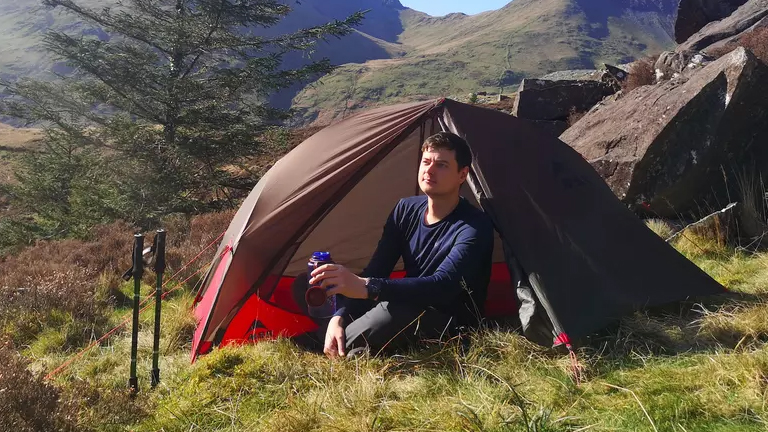
Matt is one of our main outdoor gear experts and is a hugely experienced camper. He's worked for both the Ramblers and the Scouts and has a huge passion for adventure. One of his most epic adventures saw him undertake a backpacking journey of 298 miles on the Cambrian Way long-distance trail, where his knowledge of camping knots was tested on more than one occasion...
Best camping knots: Terminology
Before we get started, there are a few terms used when describing knots that are useful to understand. These usually refer to different types of knots for camping and hiking – some refer to techniques used when tying rock climbing knots – to parts of the rope or to the characteristics of a finished knot.
Four common types of knots for camping and hiking
Hitch: A hitch is a type of knot that is used to tie a rope or line to another object, like a post, cable, ring or fence.
Bend: A bend is a knot used to tie two pieces or rope or line together.
Loop: A loop is a knot used to create a closed circle in a line.
Advnture Newsletter
All the latest inspiration, tips and guides to help you plan your next Advnture!
Slip: A slip knot creates a running circle in a rope or line, usually called a noose.
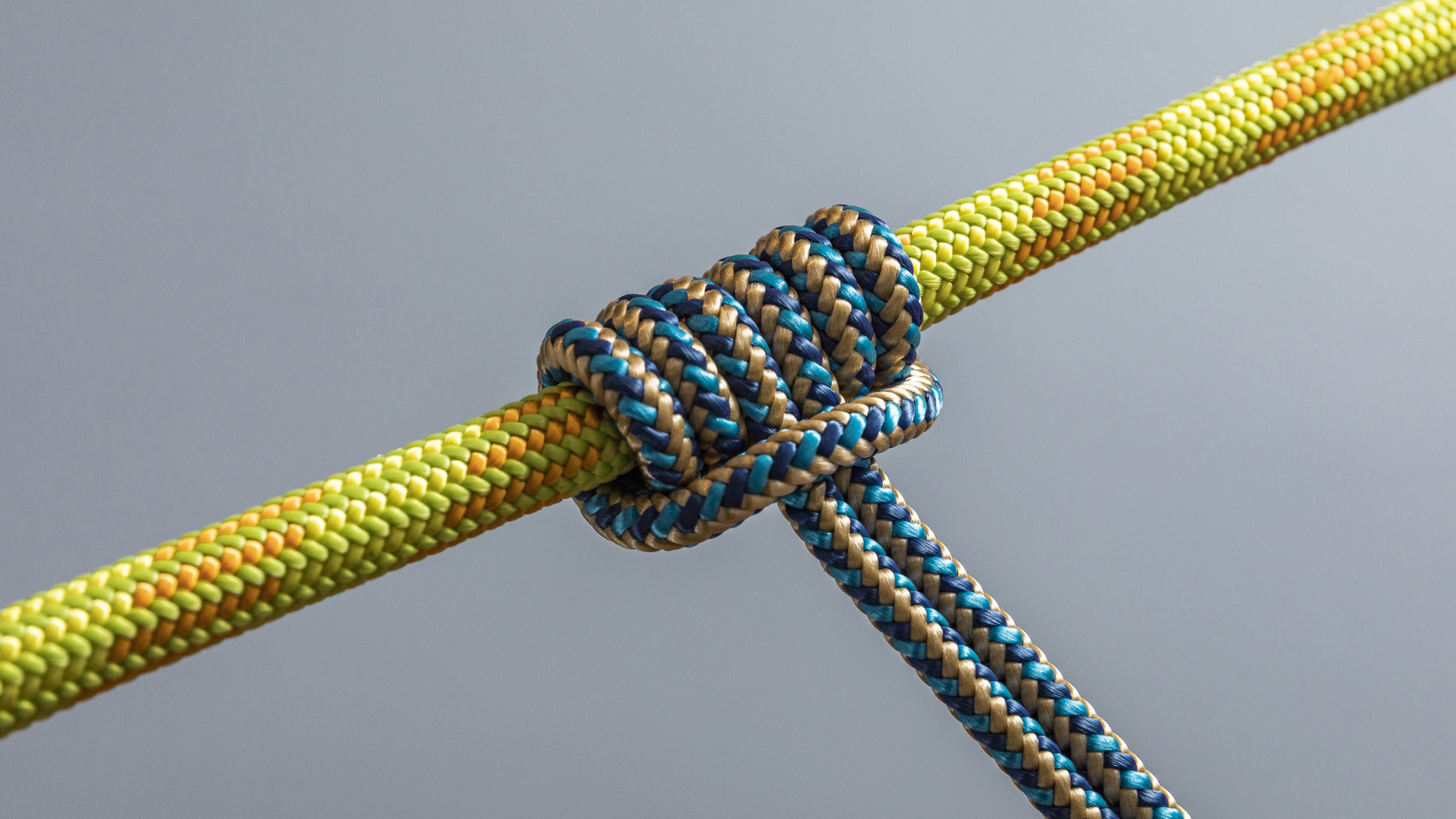
Parts of a rope
Working end: The active part of the rope in knot tying – basically, the end you’re threading.
Standing end: The part of the rope not active in knot tying.
Standing part: Section of rope between the knot being tied and the standing end.
Bight: A curved section, slack part or loop between the ends of a rope. Knots tied in the bight or on the bight don’t require access to either end of a rope.
Characteristics of a knot for camping and hiking
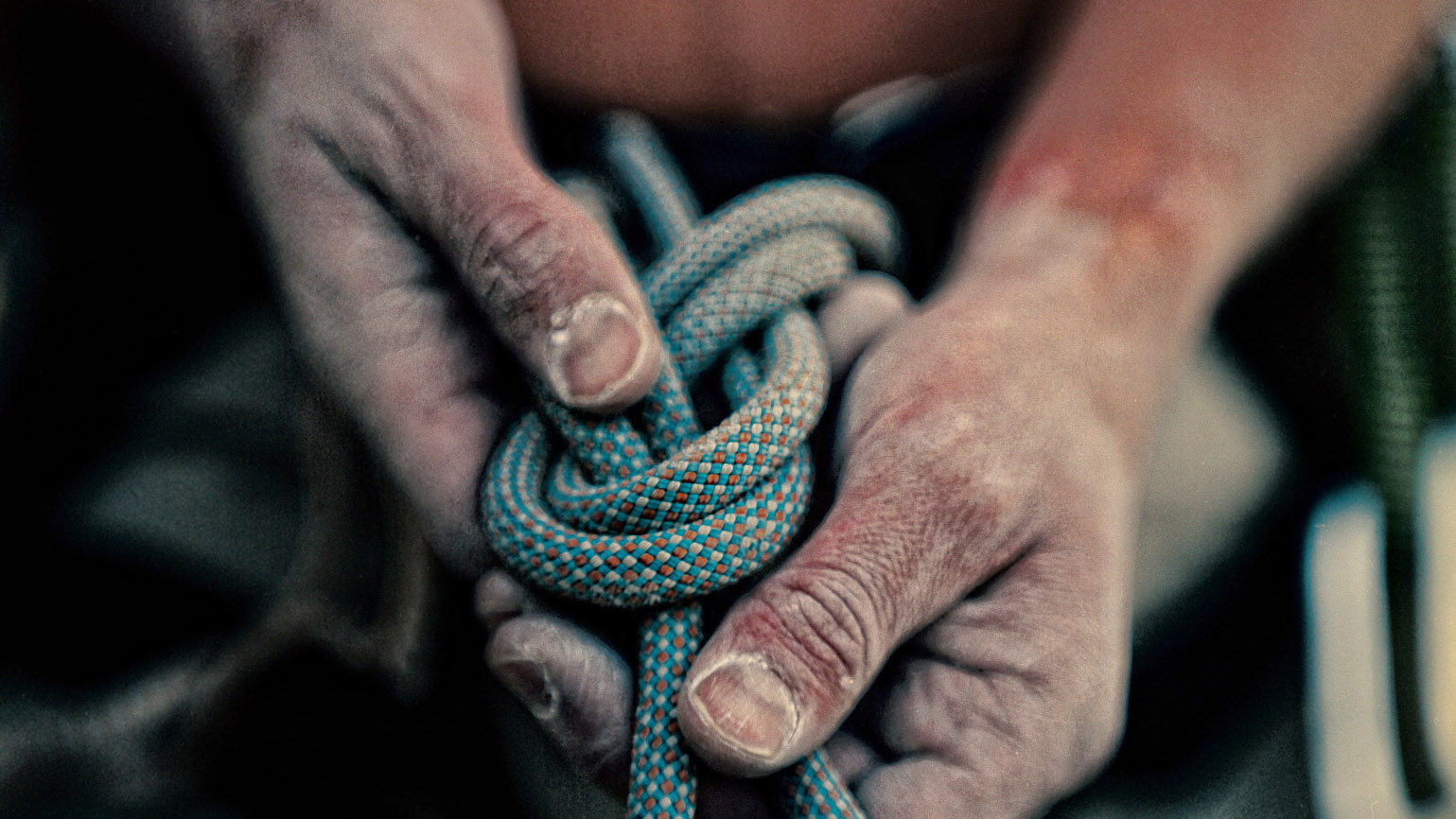
Dressing: When a knot is tied, it should be dressed before you use it – hence the term, ‘dress it before you stress it’. Basically, this means tidying up the knot and making sure it looks ‘neat’ and feels nice and tight before you apply any force to the rope.
Loading: This is the acid test of any knot: what happens when you apply force or stress the rope. If the right knot has been used and it has been tied and dressed correctly, it should withstand loading.
Slipping: When the working end of a rope passes into the knot, it unravels and fails. This process is known as slipping. It’s different from a slip knot (which is a running loop or noose) as well as a slipped knot (a knot that has been finished with a bight to make it easier to untie). A stopper knot or a backup knot can be employed to stop a knot from slipping and failing.
Jamming: Some knots are easier to untie than others after they have been loaded or stressed. Knots that are very difficult to untie are said to ‘jam’ or be jamming knots.
Six essential knots for camping and hiking
Bowline
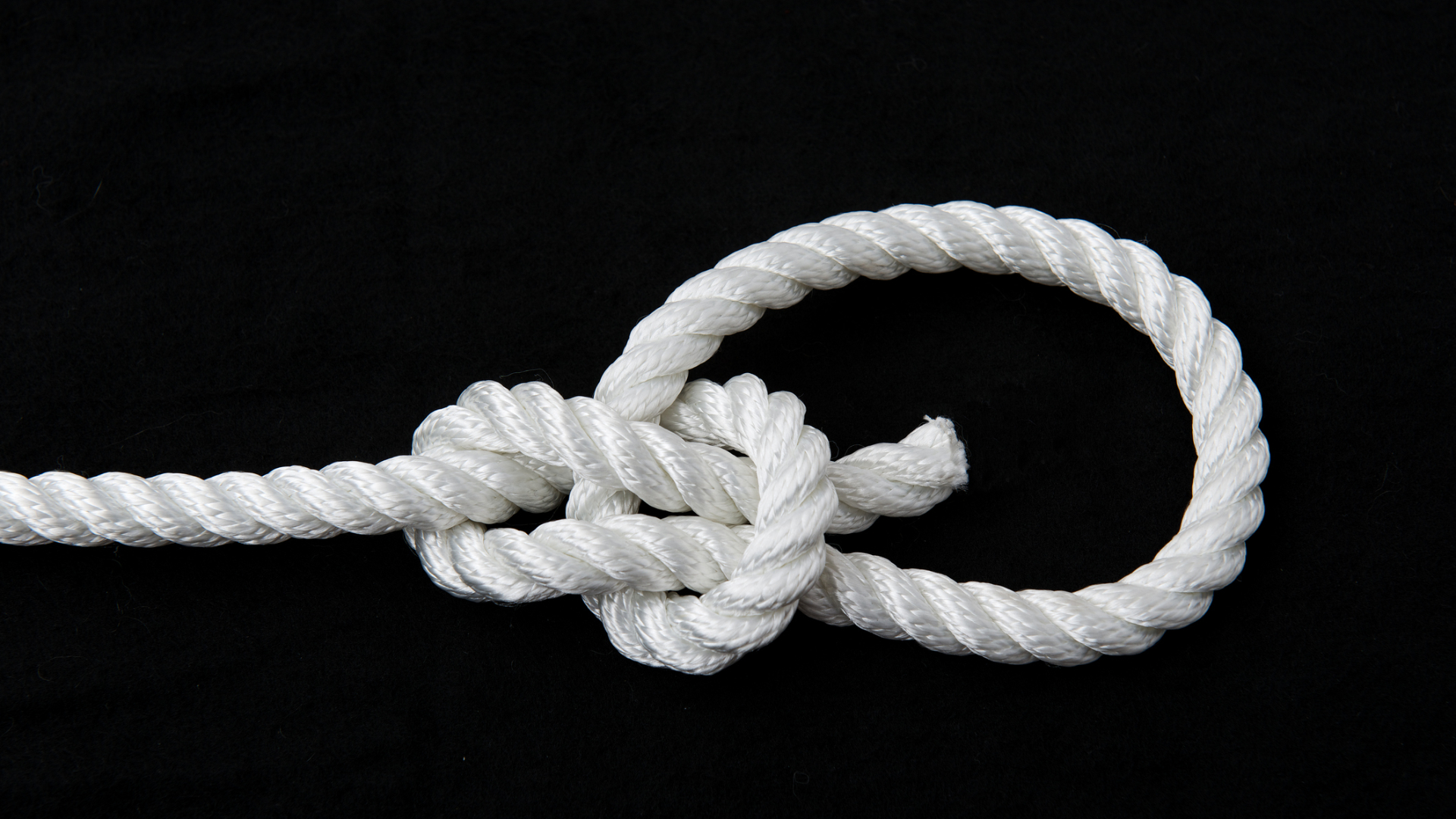
The bowline (pronounced, somewhat counter intuitively, as ‘bo-lin’) is a classic knot from the age of sail that is used to tie a fixed loop in the end of a rope. Once formed, the loop won’t tighten or slip, so it can be safely tied around a person’s waist, making it a useful rescue knot. The fact that the bowline is reliable under load means it is used in aviation for tying down light aircraft as well as in modern sailing for securing sheets and sails. It’s a great knot to use around camp for fixing guy lines to your family tent or holding down a flapping camping tarp.
The easiest way to tie it is to imagine the working end of the rope as a ‘rabbit’, and the standing part as a ‘tree trunk’.
- First, make a loop in the standing part to form the ‘rabbit’s hole’.
- Then the ‘rabbit’ comes up out of its hole, around the tree, then back down the hole.
Scouts and Guides are often taught this method with the mnemonic rhyme: ‘Up through the rabbit hole, round the big tree; down through the rabbit hole and off goes he.’
With a little practice, tying a bowline becomes second nature. It can even be tied single-handed. And unlike many of the best camping knots, a bowline is also easy to untie even after being loaded, which can make packing up your camp a lot easier.
Alpine butterfly loop
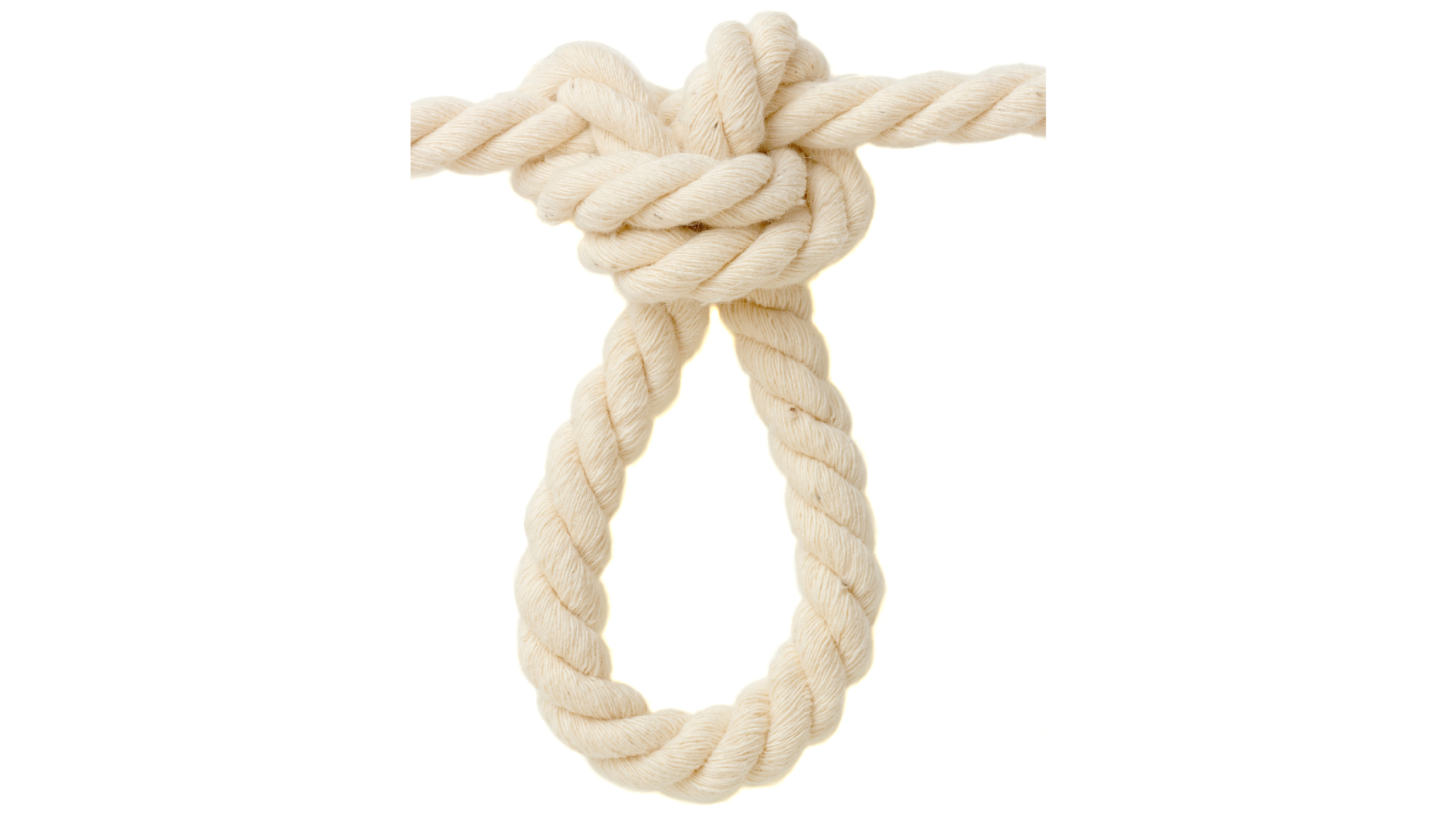
This multi-purpose climbing knot comes in handy whenever you need to make a fixed loop in the middle of a rope. It can be tied even if you don’t have access to either end of the rope. It is also a good way to shorten a length of rope, or for safely isolating a frayed or damaged section. And when modified slightly to form a butterfly bend (which is the same knot but is tied using two ends of a rope instead of a bight), you can even use it to join two ropes together. All of which makes this an extremely versatile knot. Best of all, it is easy to tie too.
The easiest way to do so is via the ‘hand-wrap’ method.
- Wrap the rope around your hand twice.
- At the end of turn one, position the rope close to your fingertips.
- Continue around and complete turn two back near your thumb.
- Pick up the turn near your fingertips.
- Wrap it around the other two turns.
- Slide the knot off your hand and tighten by pulling on the loop and the ends.
Adjustable grip hitch
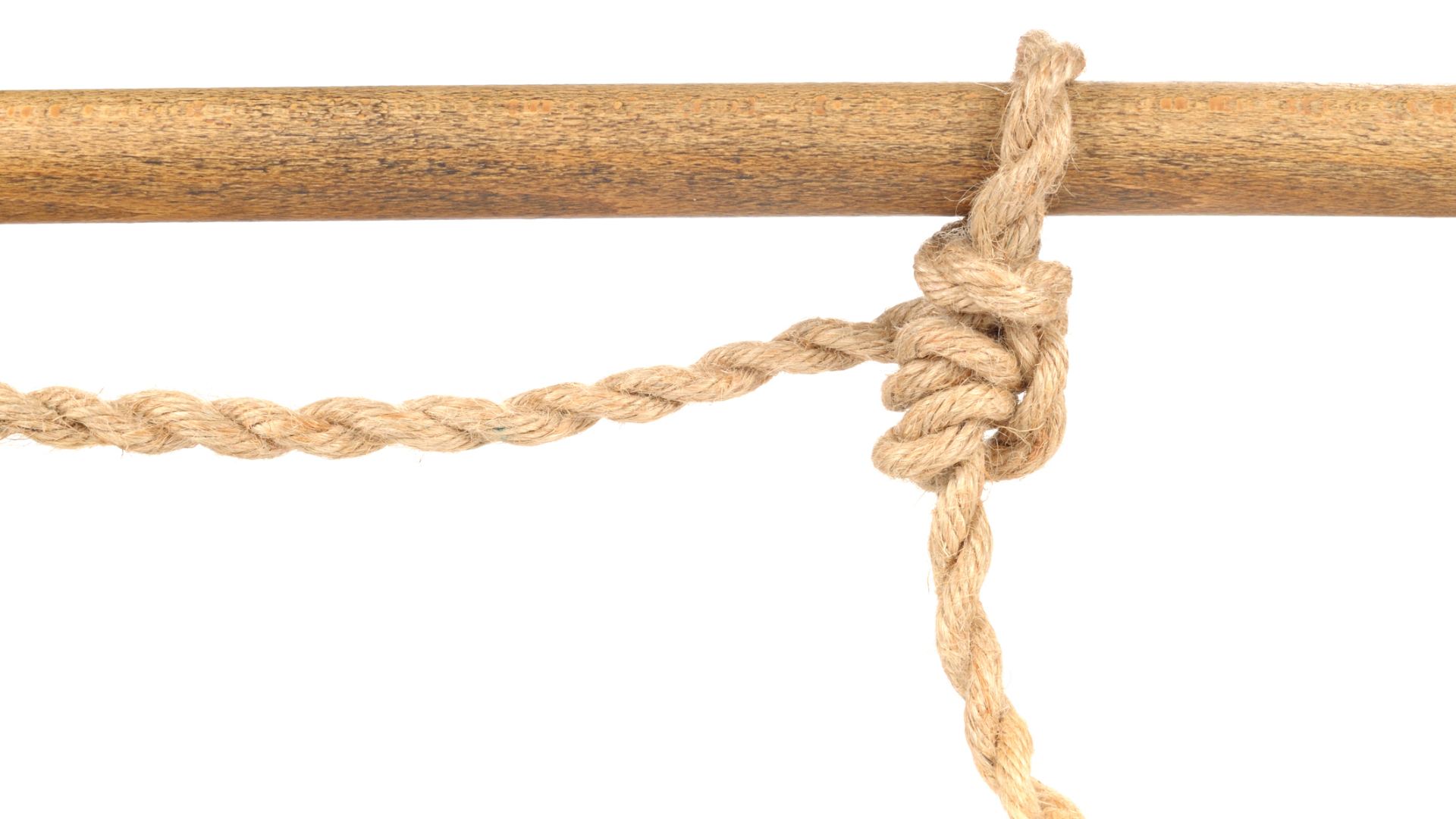
From loops to hitches now – a friction hitch, to be precise. The adjustable grip hitch is a simple but extremely useful hitch that will hold tight under tension but can easily be shifted up and down the rope while slack. That makes it ideal for pulling a guy line taut when fixed to a tent peg or for stringing a ridge line when pitching a tarp, something you will probably want to do when erecting your one-person tent in the wild. In this regard, it does the same job as better-known knots like the taut line hitch or midshipman’s hitch, but in our experience the adjustable grip hitch tends to hold better in a wider variety of settings.
What makes this one of the best camping knots is that it is easy to tie.
- Just pass the working end around a tether, like a tent peg or a tree.
- Wrap the working end twice around the standing part.
- Then, take the working end around both ropes, tuck it under itself, and tighten the knot.
- To pull it tight, slide the whole knot along the standing part. It will ‘grip’ the rope and remain taut when you release it.
- If you need even more grip on the line, for example if using a slippery synthetic rope, add an extra turn when you first start the knot, which will increase the friction.
Trucker’s hitch
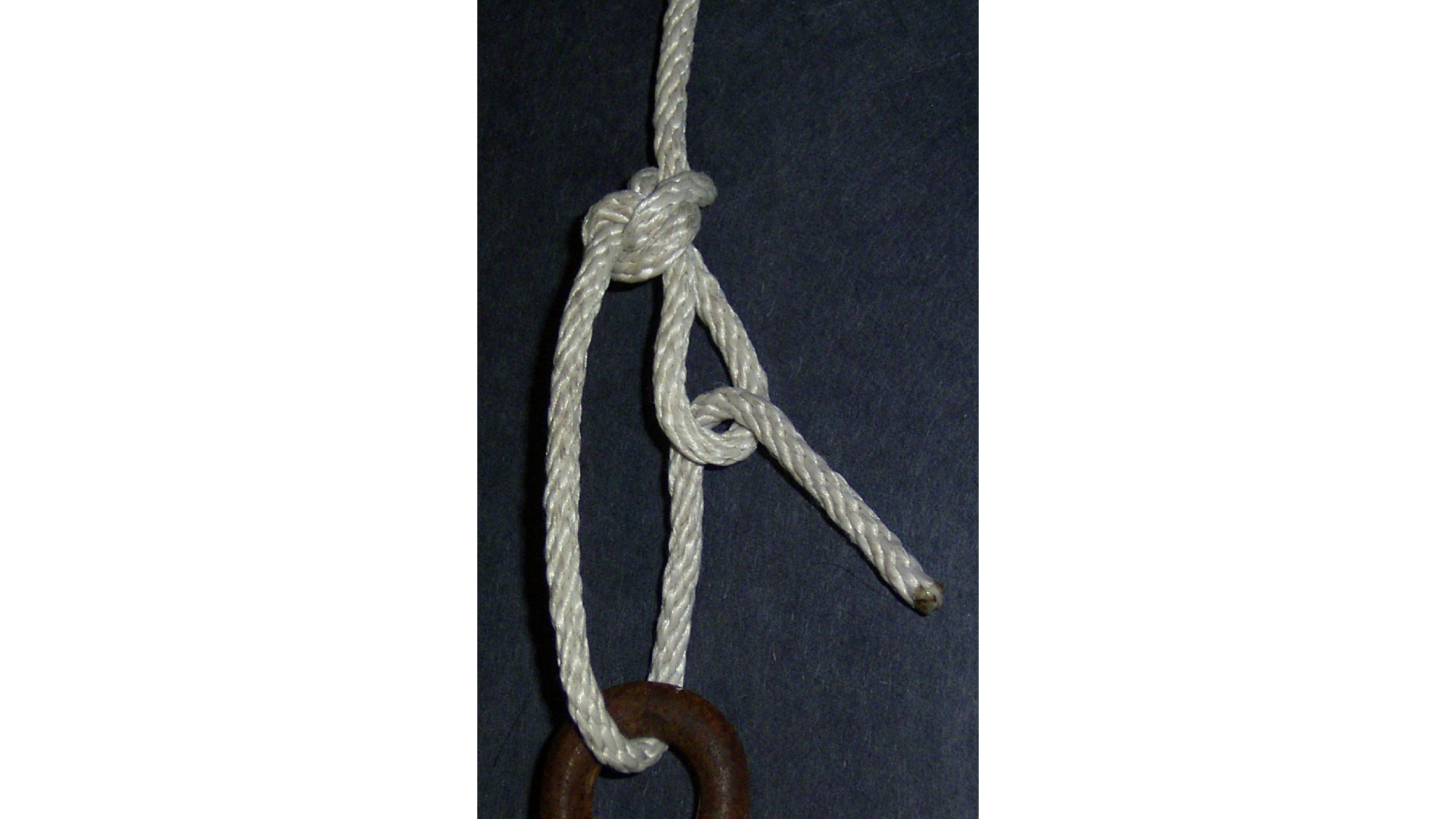
The trucker’s hitch is a compound knot that is used whenever you need to pull a rope really tight – eg when securing a load on the bed of a truck, hence the name. It basically works as a crude block and tackle, giving you additional purchase to cinch in and tension a rope effectively. In other words, it’s the ratchet strap of the knot world. As such, it is a very useful knot for both everyday use and outdoor adventures, whether you’re lashing your folded up camping chairs together or transporting timber home from the DIY store.
As a compound knot, it is tied in two stages.
- First, you need to make a loop in the standing part of the rope. This can be done in any number of ways, from a simple slipped overhand loop to a fixed loop, like the Alpine Butterfly.
- Then take the working end of the rope around an anchor point and pass it through the loop you have created.
- Then pull as hard as you can until the load is firmly locked down.
- Secure the rope with a couple of half hitches.
- Alternatively, to make it easier to untie and prevent jamming, use slipped hitches or a friction hitch.
Double fisherman’s knot
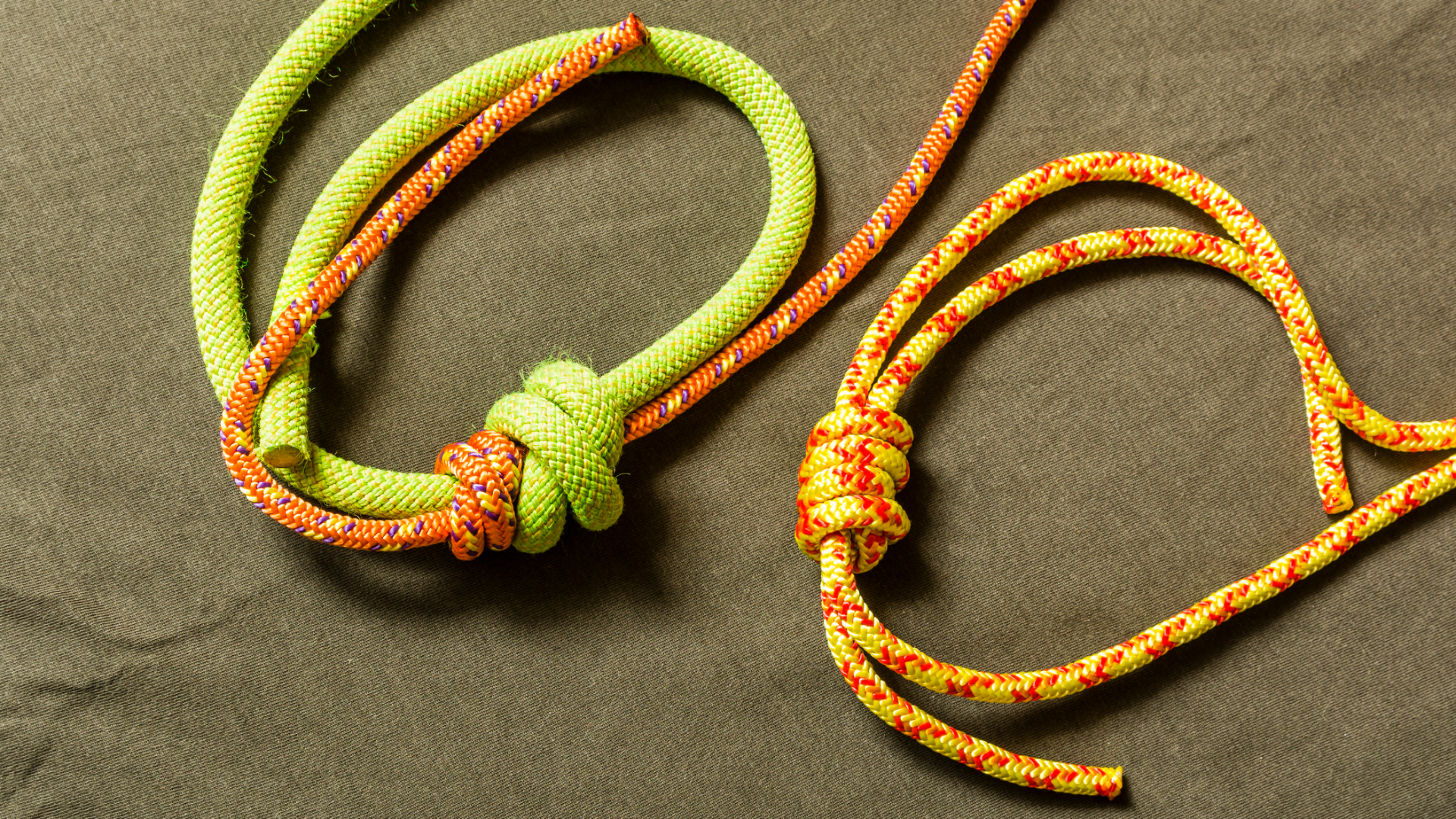
Despite its name, this knot is now more commonly used in climbing than fishing and we reckon its definitely one of the best camping knots too. It is a type of bend – that is, a knot used to join two ropes together. It’s very reliable in this role, which is why it is also the knot most frequently tied by climbers to create loops of cord (cordelettes or prussik loops) used to build belay anchors or as a safety device when abseiling and rappelling.
But for hikers, campers and backpackers, it’s a great way to make carrying loops or grab handles for bits of equipment that might otherwise get lost. Think about it – how many bits of kit have a handy lanyard hole in them? But how often do you actually bother to attach one? Well, now you can. In addition, the double fisherman’s knot is a good way to fix a broken bootlace or to make a ridge line from two lengths of paracord that are just that fraction too short. It’s also a great knot to use for tying a compass, GPS unit or map case around your neck, because it can be pulled apart to adjust the length of the lanyard.
It’s pretty simple to tie too, consisting essentially of two double overhand ‘strangle’ knots that pull against each other along the length of the rope.
- First, lay the ends of the rope or cord parallel to each other.
- Pass the working end of one rope twice around the standing part of the second rope and pass it back through the inside of the turns.
- Repeat with the working end of the second rope, tying it around the standing part of the first rope.
- Pull the rope ends to tighten knots (you don’t need a long trail), then pull the standing parts to slide the knots together.
Prussik
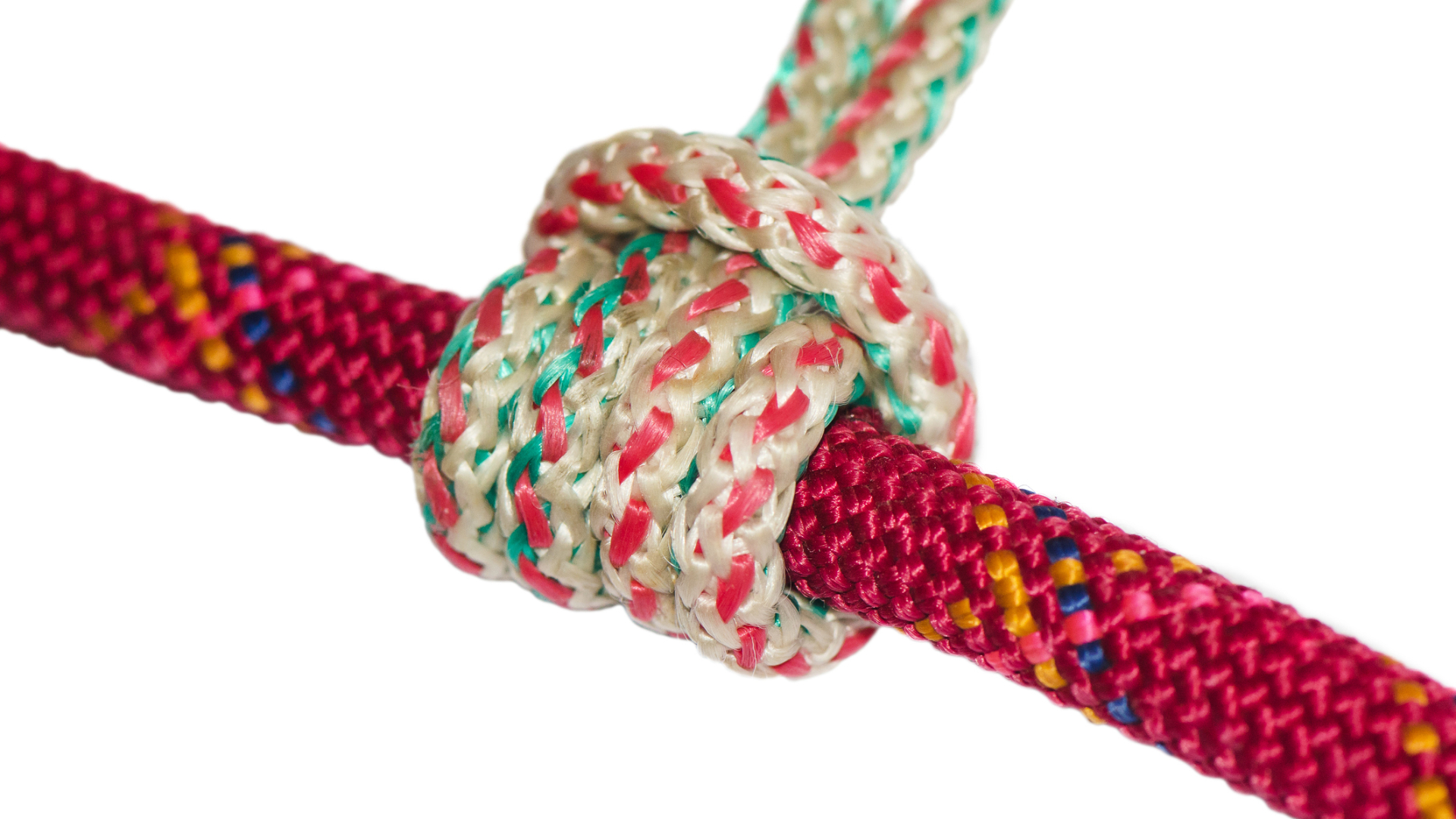
There are various types of prussik knots, but they are all used for the same purpose: to secure a loop of cord to a taut line. The prussik slides along the line when not weighted but jams solidly upon loading, just like a friction hitch. The classic prussik is a neat knot that will slide in both directions. It’s widely used in climbing but is super useful in camp for hanging flashlights, lanterns and other bits of kit from a suspended ridge line. It also comes in handy when pitching a tarp for a shelter, as it means you can pull the tarp tight along the ridge line.
If you’ve tied a double fisherman’s knot in a short length of cord to create a sling or loop, you can now attach it to another length of rope using a prussik.
- First, pass the cord around the rope and through itself, making sure the double fisherman’s knot is out of the way.
- Wrap the cord around the rope and through itself again, making three wraps in total.
- Pull the cord tight and ensure the knot is neat. You can now hook a lantern or clip a carabiner through the loop.
- Simply pinch the knot to loosen it off and slide it along the rope.
- Weight the knot in either direction to lock it. If the knot jams, you can push some cord in from the centre loop of the knot to loosen it.
An outdoors writer and editor, Matt Jones has been testing kit in the field for nearly a decade. Having worked for both the Ramblers and the Scouts, he knows one or two things about walking and camping, and loves all things adventure, particularly long-distance backpacking, wild camping and climbing mountains – especially in Wales. He’s based in Snowdonia and last year thru-hiked the Cambrian Way, which runs for 298 miles from Cardiff to Conwy, with a total ascent of 73,700 feet – that’s nearly 2½ times the height of Everest. Follow Matt on Instagram and Twitter.

